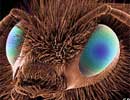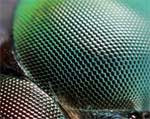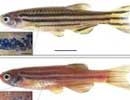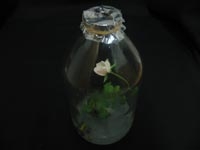 |
|
Image: BBC |
American scientists have developed an artificial insect eye designed for ultra-thin cameras, leveraging the superior characteristics of this unique structure.
The eye contains more than 8,500 convex hexagonal lenses arranged over an area no larger than the tip of a pin. This dome-shaped structure is similar to the eye of a bee.
Researchers from the University of California, Berkeley, state that this project could shed light on how insects develop such complex visual systems.
“Even when insects start with just a single cell, they grow and create an amazing optical system on their own</em," said Professor Luke Lee, a co-author of the study. "I want to understand how nature can create perfect pre-formed structures layer by layer without expensive manufacturing technologies,” he added.
 |
|
The dragonfly’s eye is dome-shaped with protruding nodes, each node functioning as a light-gathering lens. (Image: Macro) |
Ultimately, the team of bioengineers discovered a simple and relatively inexpensive method to produce artificial eyes that mimic part of the natural process.
Insect eyes typically contain hundreds of optical units called ommatidia, which are tiny lenses. For instance, each dragonfly has about 30,000 such structures. Ommatidia direct light through a lens and focus it onto a channel containing light-sensitive cells. These cells are connected to optical neurons to create images.
The ommatidia are densely packed in bulges, creating a field of view for the animal. Since each individual lens adjusts light slightly differently, the compound eye generates a mosaic-like image that is highly sensitive to movement, albeit with low resolution.
To create the artificial eye, the research team first fabricated a tiny, reusable mold containing 8,700 concave surfaces. This hollow hemisphere was then filled with epoxy resin, which interacts with ultraviolet light to form a harder material with different chemical properties. After being cured at low temperatures, the material was removed from the mold. The resulting product is a dome the size of a pinhead with 8,700 protruding nodes arranged in a honeycomb pattern. Each protruding node acts as a lens, focusing light onto the material beneath.
The next step involves creating tiny light-guiding channels, similar to those in insect eyes.
In the future, this device could be used in ultra-thin cameras or high-speed motion sensors to enhance image capture.
Professor Lee also believes it will have numerous medical applications, such as in endoscopic imaging. The team’s long-term goal is to develop an artificial retina for the blind.
T. An





















































